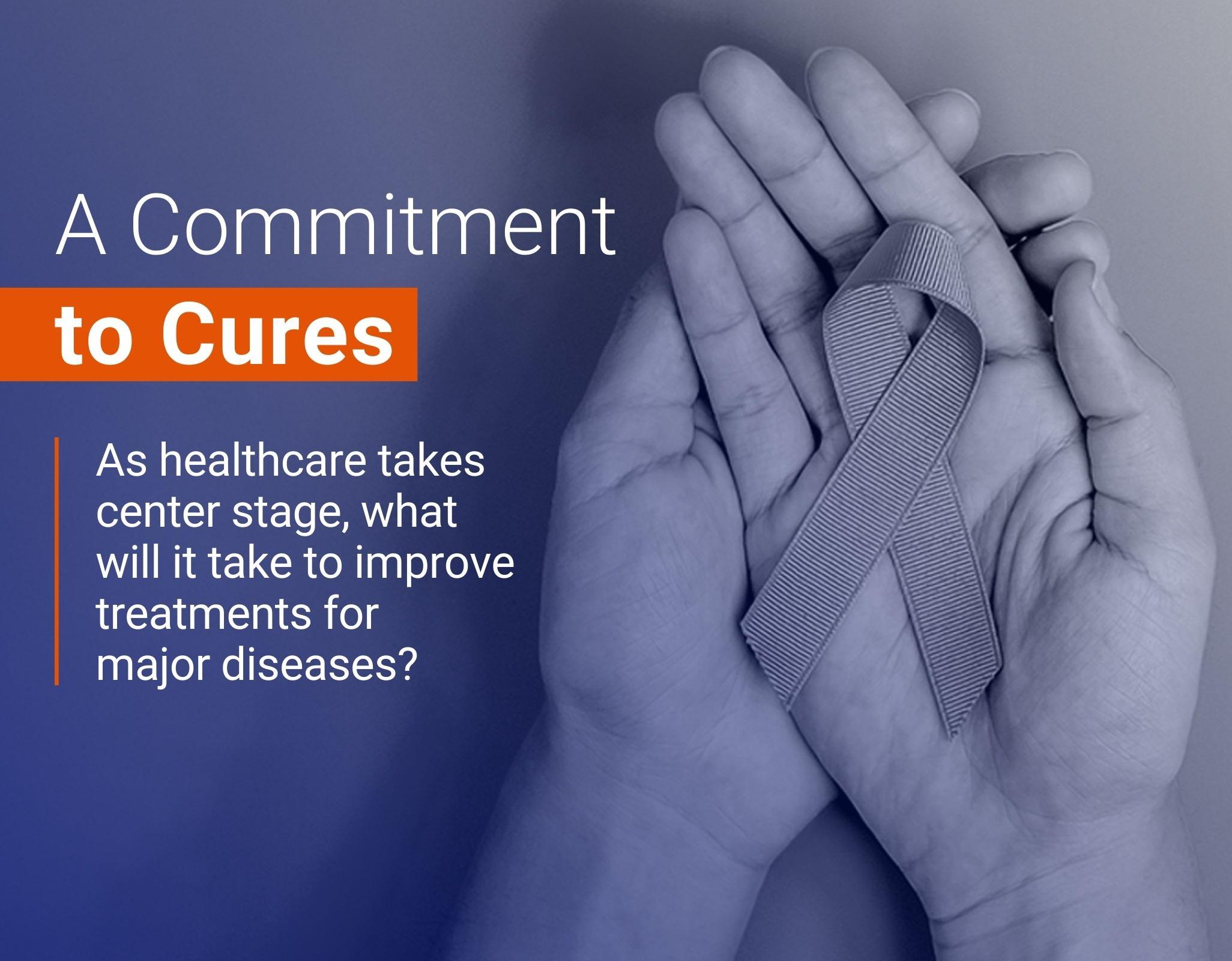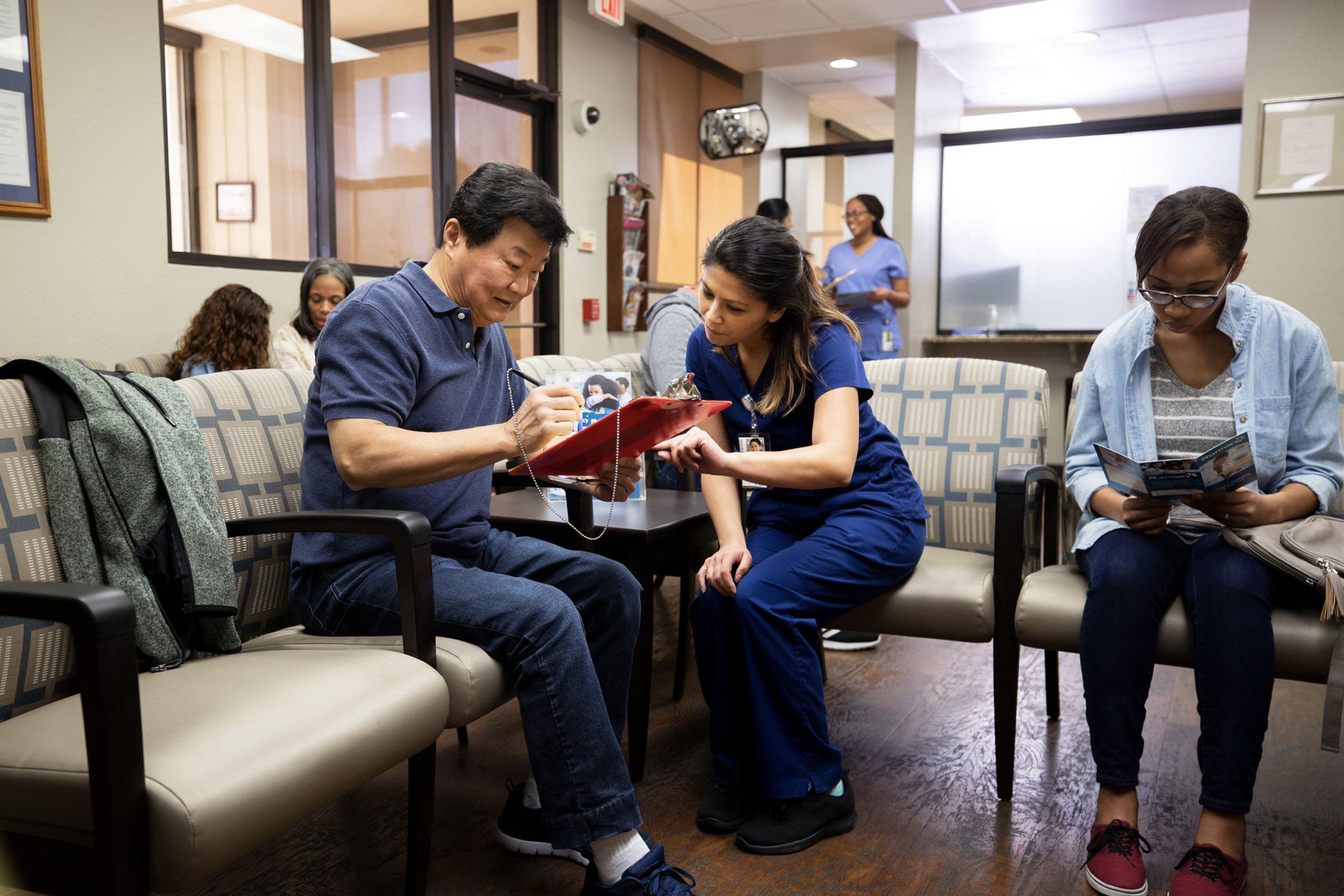
ARPA-H: Government Leaders Build on DARPA’s Success
Health, Health Policy Transformation, Healthcare Management
President Biden’s 2022 budget proposal includes $6.5 billion of initial funding for rapid acceleration of innovative medical treatments under a new organization: the Advanced Research Projects Agency for Health (ARPA-H).
Like the Defense Advanced Research Projects Agency (DARPA), ARPA-H supports projects too risky for other government research agencies or not yet under development in the private sector. The organization will focus on Alzheimer’s, cancer, and diabetes—diseases that affect millions of Americans—with the goal of delivering significant advancements in treatment, according to the president’s remarks on ARPA-H’s mandate.
Few details have been shared about how ARPA-H will function. LMI’s experience with DARPA and other agile organizations in government offers a roadmap for standing up a successful ARPA-H. LMI led DARPA’s test and evaluation team in defining, replicating, and exploring logistics information challenges for the LogX program. Implementing lessons learned from this and other experiences will establish ARPA-H as an agile organization with immediate value for the health research ecosystem. Three key tactics follow.
Leverage Agile Principles To Focus on Building a Successful Pipeline
According to the mandate from President Biden, ARPA-H is tasked with curing diseases that have confounded researchers for decades—Alzheimer’s, cancer, and diabetes. These maladies have been the subject of extensive National Institutes of Health (NIH) research. For ARPA-H to differentiate itself, it must bring a fresh approach to these diseases, finding and testing modern solutions, from monoclonal antibodies to new device technology.
“There are benefits to standing up an organization using a DARPA-like framework,” explains Sharon Hays, former chief technology officer at LMI. “The program managers in DARPA have much more power to start and end projects than at NIH. The shortened tenure of program managers means it’s harder to establish innovation-stifling norms. If ARPA-H uses its program managers in a similar fashion, the organization will take risks in what it investigates and be more willing to cut its losses if something isn’t working out. That’s critical for success.”
Hays adds that a well-crafted slate of initial projects can overcome skepticism about the organization and win support from champions. Projects with quick wins gain champions inside the government and draw interest from the public—factors that keep projects going even if they take years to reach their ultimate goals.
Crafting a successful project pipeline includes the following elements:
- Selecting new work that doesn’t overly borrow from existing projects
- Understanding regulatory frameworks and uncovering barriers
- Offering discrete funding opportunities that do not conflict with other grants, enabling organizations to collaborate with ARPA-H without endangering NIH or healthcare funding
- Effectively communicating the pipeline internally and externally so that priorities are clear
- Creating a plan for successful advanced development of promising projects by working with complementary organizations, including the
- Chemical and Biological Defense Program, NIH, the National Institute of Allergy and Infectious Diseases, and other seed investment vehicles like the Biomedical Advanced Research and Development Authority (BARDA) to establish ongoing funding.
- Building public-private relationships to help projects with a go-to-market plan.
Go for the Moonshots: Creating A Culture of Measured Risk Taking
Even before he was elected, President Biden wanted to cure cancer. Now, by empowering organizations like ARPA-H, there’s a federal focus on finding a cure. ARPA-H must take big swings at research and treatment, including nontraditional approaches. Maintaining buy-in can be difficult when an organization chooses various novel methods to investigate. But those projects often yield the biggest rewards.
Moonshot, or highly ambitious, projects have distinct benefits. Projects supporting incremental changes often meet resistance in organizations with established cultures. Moonshots rise above the traditional structure to make significant progress because they focus on a bigger picture.
Taking big swings includes the following:
- Adopting a fail fast mentality by cutting projects that don’t show promise or aren’t advancing significantly early on.
- Building organizational performance metrics to examine not only which projects advance but what research insights are relevant to the broader healthcare community. These insights can inspire new areas of inquiry.
- Revisiting projects with potential but high risks to evaluate whether they are worth restarting or to glean lessons learned.
- Bringing in stakeholders from other areas of the government and the healthcare research community to uncover edge cases or adjacent areas of research with valuable insights.
“The key to organizational innovation is creating a culture willing to cast a wide net,” explains Ray Compton, a fellow in solutions architecture at LMI. “You have to dust things off and look at them with fresh eyes. Maybe you have a treatment for one disease, but you start evaluating whether that treatment has other applications. With the advent of machine learning, we can apply analytics to data sets in new ways and those insights can lead to breakthroughs.”
Create Funding Opportunities for Early-Stage Companies and Researchers
The success of organizations like DARPA stems from a streamlined procurement process to onboard small organizations, startups, and individual researchers. ARPA-H will need the same. Established healthcare companies and private financiers are laser-focused on cutting-edge healthcare research and willing to fund projects quickly if they show promise. For the government to compete in this landscape, applications for funding must be simple and clear, with a short decision pipeline and contracts that offer flexibility for project outcomes to prevent roadblocks to research.
The government can also focus on supply chain support that may be missing in other parts of the health research landscape. Compton notes the many areas to consider for making a successful treatment. As an expert on strategic development of integrated solutions for capability gaps in national defense, he understands supply chains’ importance to treatments. “We learned a lot with vaccine rollout during the pandemic: what you need for refrigeration, vaccine vials, and shipping. If you want to bring a treatment to the public, someone has to the work on the backend as well. Bringing in logistics and capability management expertise at that stage—even if those experts aren’t focused on healthcare—offers value.”
Other Transaction Authorities (OTA), a type of procurement authority used in defense and elsewhere to engage researchers on specific topics, can supply a solid framework for making quick decisions. Working with stakeholders in programs like BARDA’s Drive (a unique funding program for removing risk and funding innovation) for seed and late-stage funding opportunities will make ARPA-H more competitive in the healthcare funding landscape.
Building a successful and non-traditional government organization includes the following elements:
- Streamlined requests for proposals open to organizations and researchers of all sizes.
- Technological interoperability with a variety of health data systems for researchers to submit necessary data easily and quickly.
- A framework for researchers and project teams to retain some intellectual property rights and pathways to commercial success if a project offers value. This framework will entice teams to work with ARPA-H early.
- Ensuring that collaboration with ARPA-H doesn’t mean sacrificing academic or NIH grants, or other government funding opportunities once a project enters the advanced stages of inquiry. Product creation will help ARPA-H add value to the broader healthcare research ecosystem by taking on riskier projects and supplying a clear pathway to continued development upon success.
- Organizational awareness of what private industry is funding and building relationships with those investors for ongoing project development.
“The government tries to separate itself from commercial entities, but that’s not going to work in healthcare, which already has a lot of private capital,” explains Mike Dingman, program manager at LMI. “The government can grow early-stage, unproven projects that investors shy away from as a key role for ARPA-H. But program managers must have a deep understanding of what the private sector is doing and what is coming down the pike to ensure that ARPA-H is funding unique work to match DARPA’s success at going beyond the known and into the frontier.”
If built with purpose, ARPA-H could be integral to delivering health transformations to Americans and the world. Many lessons can be learned from other organizations that have worked on big goals in the past. These three focus areas offer a starting point.
-
Technology and Innovation with Impact
For 60 years, LMI has supported government agencies to achieve breakthroughs in mission delivery, through objective advice, deep and diverse expertise, and a focus on innovation. Our Forge™ technology studio nurtures the advancement of ideas and concepts, synthesizing them into progressive yet practical solutions that catapult our clients’ missions.
Learn More


Raymond Compton
Fellow, Solutions ArchitectureRay Compton, a retired U.S. Army colonel, joined LMI in 2019 and serves as a principal for National Security Science & Technology, supporting internal and external LMI stakeholders in the strategic development of integrated solutions for capability gaps in national defense.


Brant Horio
Sr. Fellow, Applied Research & PartnershipsBrant Horio leads our strategic research group, integrating resources, technologies, and partnerships with applied research to advance LMI's innovation mission.


